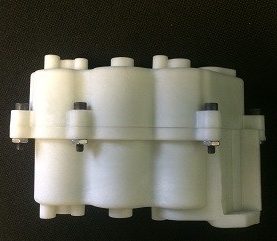
There are a few exceptions, but for the most part, the injection molding cycle is the same. Before the mold is put into the molding machine, some materials that are hydroscopic (which means the material absorbs moisture) must be dried because they could cause problems in injection molding the part and also the function of the part. Drying the material is a must. There are different types of dryers and each material has a spec of what temperature and drying time it must be dried to.
The mold is then clamped into the machine. Knockouts that push the ejector plate back and forth must be put in the corresponding places. On some molds, the ejector knockout must be attached to the ejector plate so it pulls the plate back. This is needed if ejector pins are in front of slide cores to prevent shearing off of the pins. The water lines or cartridge heaters are also hooked up. Some molds need to be cooled and some heated. The mold is now ready for the injection molding cycle.
The first function that happens is the machine closes and both halves of the mold are held together under extreme pressure to prevent the mold from opening and causing the part to flash.
Next the plastic is injected into the mold. This is usually called the “filling time”. The injection pressure and injection speed are set to certain parameters to fill the mold. Once the part is filled the pressure is usually reduced and this part of the cycle is usually called the “pack time” or “hold time”. This time varies. Thicker parts have a longer time than thinner parts.
Then all pressure is taken off the part and it goes into the cooling part of the cycle. Again, this time is longer for thicker parts. The cooling portion of the cycle also affects part warpage and part dimensions.
Next the mold opens and the part(s) are ejected from the mold. Sometimes the ejector knockouts push the ejector plate back and forth numerous times in order for the part(s) to fall off. The ejection part of the cycle also includes the unscrewing of cores if the parts have internal threads.
The injection molding cycle can either be semi automatic or fully automatic which means the machine door is not needed to be opened or closed to actuate the next cycle to begin.
